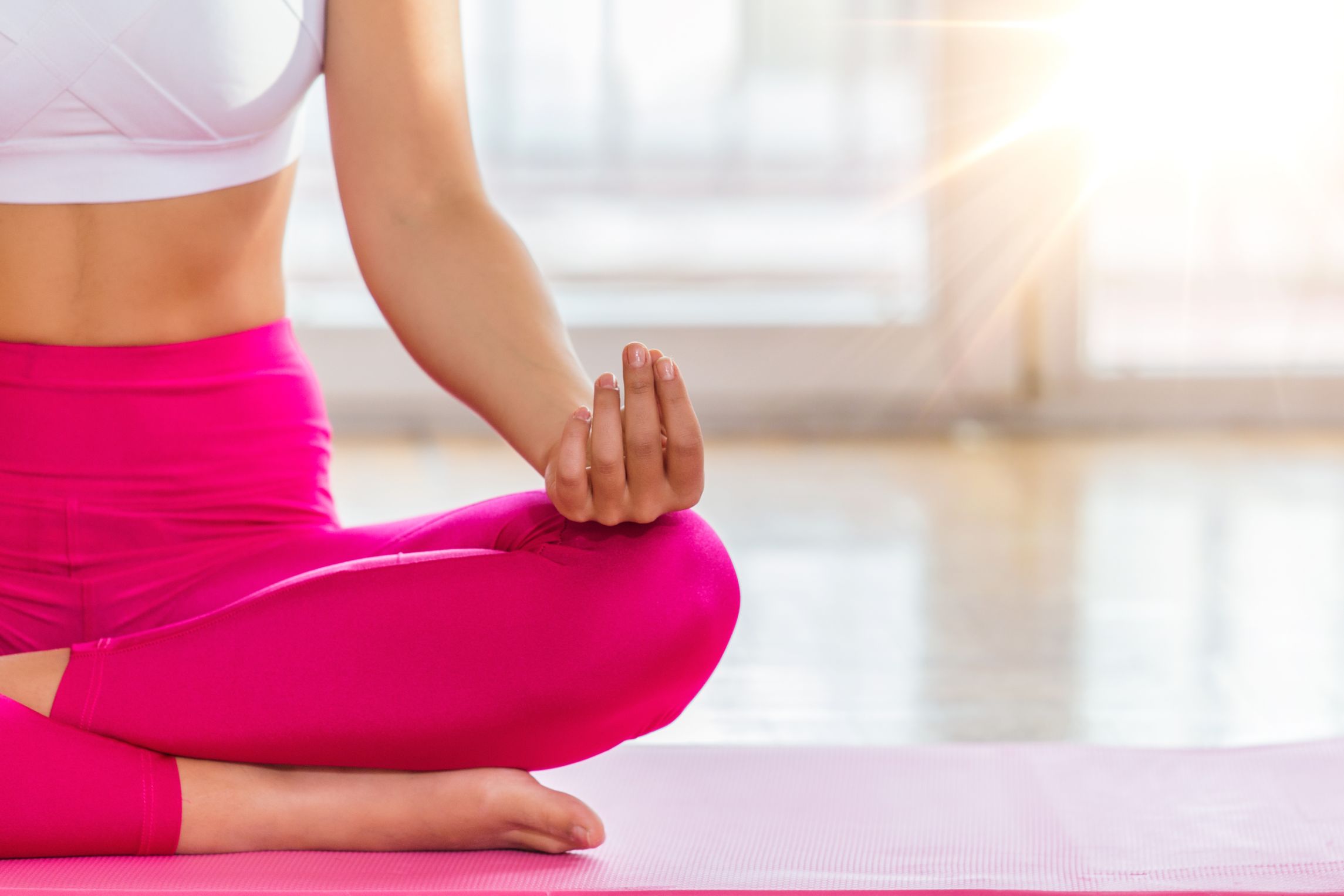CHAPTER 18: DEEPER INSIGHTS OF AYURVEDA

18.1 Supporting Women’s Health
18.1.1 Knowing your body through Dosha Type
‘NARI SHAKTI’ IS A WORD WHICH IS DECADES OLD, YET WE HAVE STARTED CONSIDERING AND UNDERSTANDING THIS WORD NOW. AYURVEDA HAS ALWAYS CLASSIFIED WOMEN AS A EMBODIMENT OF POWER OR SHAKTI, OR SOURCE OF CREATION.
Talking about “women’s health” gives various dimensions concerning different stages of a woman’s life. Each woman goes through a number of profound changes throughout her life. The primary changes are- menarche, pregnancy, postpartum, and menopause.
Here are some dosha characteristics that can help you to understand how the doshas play a significant role in women.
Vata women are always on the go. They are creative, artistic, intuitive and multi-taskers. However, they often tend to lose interest easily. They are generally skinny and find it hard to put on weight. They have a darker or dusky complexion, and dry frizzy hair. They have oversized noses and asymmetrical eyebrows. They are prone to dry eyes, dry skin, cracking joints, malnutrition, anxiety, digestive issues mainly related to the large intestine or colon, arthritis and neurological issues etc.
Pitta women are seen as fiery leaders and women on a mission. They are passionate for others and are lady bosses, born to rule. They might be activists or reformists. They are seen as women who can transform the world. They are strong-headed and fearless. Physical characteristics include freckles and moles, skin that flushes easily, sharp and piercing light coloured eyes, often blondes, sharp striking features, angular jaw, sharp pointy nose. They are prone to redness of eyes, vision problems, rashes, fever, migraines, ulcers, liver imbalance, heartburn, burn out, adrenal fatigue, digestive issues mainly related to the small intestine and high blood pressure.
Kapha women are characterized as nurturing women with a motherly touch. They are the women you confide in, and enjoy cooking and feeding others. They are extremely supportive and understanding. They are socialists who believe in giving more than receiving. Their physical characteristics include a round face, nose rounded at the tip, clear skin, deep and calm eyes, thick lustrous hair, broad shoulders and chest, and wide hips. They generally weigh heavier than others of the same height and size due to their sturdy and dense bone structure. These Kapha types are prone to sluggishness, poor digestion, digestive issues mainly related to the stomach, weight gain and metabolic issues like insulin insensitivity, diabetes, PCOS etc.
18.1.2 Ayurvedic treatment for greying of hair in women
Greying of hair is a very common problem along with increasing age. It is simply an indication that your body is growing old and your physical features are undergoing changes. While it indicates undergoing maturity in general, greying of hair in your 20s and 30s is not regarded to be healthy. Many women have reported to suffer from this problem. Early greying of hair occurs due to many reasons, yet the common ones are sinus, tension, anxiety and washing hair with hot water.
Fortunately, Ayurveda has a cure to such problems. Bhringraj ayurvedic oil is effective in maintaining healthy hair quality, while also hair healthy largely preventing greying of hair. Ensuring a healthy and nutrient rich diet is also helpful.
18.1.3 Ayurvedic treatment for Anaemia in women
Studies have shown that around 55% of Indian women are anaemic. Although anaemia is a common ailment, it is often ignored until deficiencies become more serious.
Anaemia is caused due to iron deficiency. you should consume food rich in iron like nuts, apple, amla, beetroot, spinach etc. A great hack that you can try is adding a few lemon drops or apple juice to water to boost iron absorption. Anaemia can also be effectively managed with amla, aloe vera and Punarnava (Boerhaavia Diffusa).
18.1.4 Treating Acne and Obesity Among Women
Obesity is a sign of a very unhealthy lifestyle and has the potential to cause drastic health concerns. Two ayurvedic herbs that help in reducing the weight are Guggulu and Punarnava, or Boerhaavia diffusa. Nonetheless, it is important to have a balanced diet along with some sort of regular physical activity to prevent obesity. Following a regular workout routine can work wonders in reducing obesity.
Acne can leave behind scars and ruin your skin. But it is very important to know why are those acne attacking your skin and what does it imply. Acne are of varied types and accordingly has effects on your body. You should definitely consult a dermatologist in such scenarios. You can easily treat acne with a lot of ayurvedic remedies that are available at your home, such as turmeric, curd, lemon, sandalwood, neem and giloy.
18.1.5 Ayurvedic treatment for menopausal problem
Sundari kalp forte is an excellent medicine that eases the transition to menopause. It helps in cleansing your blood and is highly recommended for the menopausal syndrome in women. Calcium rich foods are also recommended, as calcium deficiency is quite common during this phase. Eating a balanced diet, practising yoga and staying active can overall treat menopausal imbalances.
18.1.6 Balancing Menstruation cycles using Ayurveda
- Consume healthy, home cooked food
- Avoid alcohol and smoking
- Avoid excessive fast food
- Maintain a balanced diet, leading to regular bowel movements
- Take warm showers and consume plenty of liquids
- Avoid deep-fried food to smoothen your digestion and relieve cramps
- Take enough rest, have plenty of water, and avoid rigorous workouts
- Sesame seeds, soaked in water, lead to regular blood flow and keep cramps away
18.2 Ayurveda and Parenting
18.2.1 Healthy Parenting Habits as per Ayurveda
Ayurveda talks about several parenting tools to help you refine your parenting skills, and they apply to children.
- Discover your child’s dosha type and manas or psychological constitution
- Heal yourself as a parent
- Attention and appreciation towards your kid
- Healthy routines that can improve family dynamics and bondings
- Manage meltdowns and cultivate better behavior as parents
- Anticipate and adapt continuously
- Motivate them to practise Ayurveda from an early stage
18.3 Ayurveda and Sexual Health
18.3.1 Sex and the Mind
AYURVEDA GIVES DUE IMPORTANCE TO SEX OR ABRAMACHARYA FOR MAINTAINING YOUR MENTAL AND PHYSICAL HEALTH. SEX IS CONSIDERED TO BE ONE OF THE THREE MAIN PILLARS OF LIFE WHICH MAINTAIN HEALTH, ALONG WITH DIET AND SLEEP.
The mind’s pranic relation explains why sex is 95% a mental phenomenon. The Apana is the prana that controls sexual function in humans. This prana functions in both mental and physical domains and is responsible for sexual arousal and intercourse. In other words, sex is a combined creation of the prana and mind together.
Factors that can change this natural process are either love or meditation and these can subdue it naturally.
18.3.2 What kind of lover are you based on your dosha?
Doshas play a major role in determining your personality and habits. They do play a significant role when it comes to sex. As we talked about the role of mind in sexual intercourse, we can hereby say that doshas control your mind and hence intercourse. Your habits as a lover, based on your dosha type are discussed below:
Vata lovers are described as highly erratic as well as romantic. For them mental foreplay is as important as touch and sensuality is. People with dosha type are open to creativity in bed but also tend to get bored easily. Thus they might even feel like changing partners regularly to find bliss.
Pitta people are considered to be hot Latin lovers of Ayurveda. Pitta lovers adore attention and their skin and heart are very sensitive. Pitta people are very adventurous and passionate but they are envious by nature. They have to carefully tune into the needs of their partner and avoid dominating them.
Ayurveda says that people with Kapha dosha are created for love. Kaphas crave connection to other people and they generally have an earthy sensuality about them. They are calm, soft, gentle and romantic, both as humans and as lovers. However, they tend to become boring and lethargic if they are not motivated enough. Kapha people are likely to become clingy and co-dependent.
18.3.3 Tips for a healthy Sexual life
- Sex should be seen as a way of nourishment and deep connection.
- Your body is at its prime during the winter season, when sex is preferred.
- During spring and fall, the body stamina is moderate so sexual frequency should be reduced to a few days.
- In the summer season, your strength is at its lowest so sexual frequency should be drastically reduced every other week, whenever you feel it is necessary.
- 10pm-11pm is considered to be the best time to make love. It is assumed that stamina and passion are at their peak during this time.
- Ayurveda believes that a large proportion of your vital energy – Ojas is lost during orgasm and intercourse. Hence, consume healthy foods like ghee, rice, pudding, coconut atre etc. to rebuild the lost ojas.
- Practice abhyanga (self-oil massage) in the morning before bathing for better stamina and nourishment.
- Have a bath in cool water after sexual intercourse. Wear light, soft cotton clothes afterwards.
- Apana Vayu – one of the five “winds,” resides in the lower half of your body. It regulates the movement of the legs, elimination, menstruation, childbirth, and orgasm. The downward, outward movement of healthy apana also provides us with a sense of rootedness. Thus, sex as well as masturbation should be avoided during menstruation, as it tends to oppose the downward energy of this natural cycle.
18.4 Intermittent Fasting
18.4.1 What is Intermittent Fasting?
Fasting in Ayurveda is called pratyahara, which is derived from the words prati meaning against, and ahara, which is anything consumed. Pratyahar is deliberately choosing what to take into the body, mind and spirit, whether food, breath or sensory input. Prtyahar has dual meanings: as we choose to avoid harmful substances, we discover what is beneficial for the body.
Ayurvedic fasting doesn’t literally mean going without food. It does not involve suffering through hunger pangs and lethargy. An ideal Ayurvedic fast includes foods and liquids well, along with eating cleaner, lighter and diet appropriate food which enhances the state of mind, body and soul.
Intermittent fasting is one such type of Ayurvedic fasting regime. It is not clearly laid on the guidelines of Ayurveda, yet has nevertheless proved to be efficient. It is a pattern of life which requires a lot of commitment, discipline and patience. Guidelines are as follows:
- Fast for 14-16 hours straight, then eat within an 8 hour period
- For instance, if you’re eating dinner by 8 pm, then your next meal should be around noon or 2 pm the next day
- Afterwards, you’re allowed to eat your meals between the 8-hour-window of noon to 8 pm or 2 pm-10 pm (Although, you can drink water during this time)
- Eat everything but avoid binging
- During the 8-hour eating window, intermittent fasting allows you to consume food high on nutritional value
- However, it’s best to eat your regular healthy food and avoid fried, sugar-rich and calorie laden foods.
- There are several different ways to practice intermittent fasting. There are different principles based on the same, such as the 16:8 principle, or alternate days or even for 24 hours, each of which can be tweaked as per the needs of the individual
18.4.2 Benefits of Fasting
- Rests the digestive tract, which frees up energy that can be used for healing
- Excess energy fuels agni, which burns toxins to support a strong immune system
- Incorporate fasting into the routine, improves meditative and resting practices
- The body feels lighter and regains its natural glow
- As energy increases, the mind becomes clearer and well focused, eventually resulting in better choices and decisions
- Clearing of unwanted toxins, which helps connect with your consciousness
- Aids weight loss, improves digestion, and gets rid of bloating
18.5 Music and Ayurveda
The Sanskrit word svanah means sound or tone, and generally refers to a type of synchronization. This is not only concerned with music only, but also implies synchronization of the human body. Music and Ayurveda always move side by side and if you take an apt music therapy, it can prove to work wonders for you.
18.5.1 Early background of Music and Ayurveda
Classical Indian Music is well recognized for its entertainment value throughout the world. However, it is hardly a known fact that Indian rishis discovered the rag chikitsa (music therapy) which talks about the therapeutic value of music long back in the past. As per Hindu mythology, Samveda (one of the four Vedas deals with music), Rag chikitsa has been elaborated as a part of Ayurveda also in ancient Ayurvedic texts. The doshas i.e. vata, pitta & kapha are very well balanced by rag chikitsa.
RAGA CHIKITSA IS BASED ON THE PRINCIPLE OF SOUND VIBRATIONS MOVING IN SPACE, WHICH PRODUCES A HEALING AND SOOTHING IMPACT IN THE ENVIRONMENT.
18.5.2 Benefits of Ragas
Ragas are related to time and season. Just as certain medicines are selected to pacify various diseases, the properties of ragas can balance doshas and act as a medicine through the healing process. Music is a foolproof treatment for various mental and physical ailments.
Ragas helps in fighting against aging, pain, insomnia, schizophrenia and epilepsy. It has power to cure headache, stress and abdominal pain. Ayurvedic music therapy is a proven method to control your blood pressure and the functioning of your liver.
18.5.3 Music as per your dosha
The soothing instrumental sounds of the bamboo flute are said to keep the vata dosha in balance by preventing its increase. It emits soft notes and has a calming effect on its listener. It also eliminates anxiety and stress. Interestingly, it is the flute from which Lord Krishna played his soulful calming melodies alone on a calm river.
Pitta dosha needs a strong quality to catch its attention, which the Sitar is said to possess. It emits nasal overtunes and rich sound which helps to keep pitta in balance.
THE SAROD is a classical Indian flute-like instrument. It has a peculiar deep and awakening sound with clear tones. This is said to balance and enliven the kapha dosha. Although the sarodnis not as sweet as the sitar, it has its own features and effects in controlling the kapha dosha.
18.6 Healing with crystals
18.6.1 The basis of the belief
Precious stones have an old relation with Ayurveda, in addition to the numerous superstitions attached to it. They not only provide the mind with a sense of heavenly happiness, but also provide health through their beauty and inner features.
In the Indian jyotish shastra and in astrology, the minute rays passing through these stones are believed to have a calming effect on the sun. This helps in maintaining a universal balance and keeps you healthy.
According to Ayurveda, there are 9 gems, each having different qualities and influence on your mind, thereby enhancing the mental power and working. Gemstones are being used for centuries because of their therapeutic strengthening and healthy functioning of the heart and brain. They also tone the body with their vitality and energy.
18.6.2 Which gemstones and crystals help with what
For thousands of years, Indian Ayurvedic practitioners and astrologers have prescribed specific gemstones to be worn close to the skin for treating certain diseases, chronic infection, and for improving the cosmic vibrations around you.
- Blue sapphire / Nilam revives a fiery stomach, releases mental stress and also enhances the brain activity
- Diamonds / Hira provide positive energy and can treat chronic diseases
- Pearls / Moti creates excellent dosha stability, cures insomnia fatigue, reduces excessive body heat and cools the mind
- Rubies / Manick tones the heart, increases memory span, and can treat epilepsy, depression and anxiety.
- Red Coral / Lal Munga can treat vomits, asthma, heart diseases, brain diseases etc. due to its antitoxic properties.
- Cat’s eye / lehsunia can treat the heart, brain, and body, as well as curing anaemia and lack of appetite
- Pain sapphire / Pukhraj can treat digestive infections and blood diseases.
18.6.3 Doshas and crystals
For Vata people, the most energetically aligned stones are aquamarine, ruby, garnet, yellow sapphire, emerald, topaz, and onyx
Emerald and aquamarine are harmonious stones for Pitta types, which especially include amethyst, blue sapphire, pearl, diamonds, moonstone, and opal
Kaphas should generally seek for ruby, garnet, blue sapphire, or cat’s eye.
18.7 Ayurveda & Astrology
18.7.1 What does Ayurveda and Astrology mean?
Long before Ayurveda was formally introduced, there were universities in which it was taught to students . Ayurveda, as Vedic astrology, originates as a branch of the Vedic traditions. There are descriptions of Vedic astrology and Ayurvedic healing in the ancient Vedas.
18.7.2 Astrological factors and doshas
Vata
Signs: Gemini, Virgo, Libra, Capricorn, Aquarius
Planets: Mercury, Saturn, Venus (secondary), Rahu.
Pitta
Signs: Aries, Leo, Sagittarius, Scorpio
Planets: Mars, the Sun, Jupiter (secondary), Ketu.
Kapha
Signs: Taurus, Cancer, Pisces
Planets: Moon, Venus (primary), Jupiter (primary) Saturn (secondary)
Through these 18 chapters, you have gained an extensive understanding of the origins and application of Ayurveda across various spheres of life. We congratulate you and are excited to see you apply these tips to create long-lasting, sustainable change.
Take a look at the course outline here.
Scroll down to ask questions relating to this chapter.







